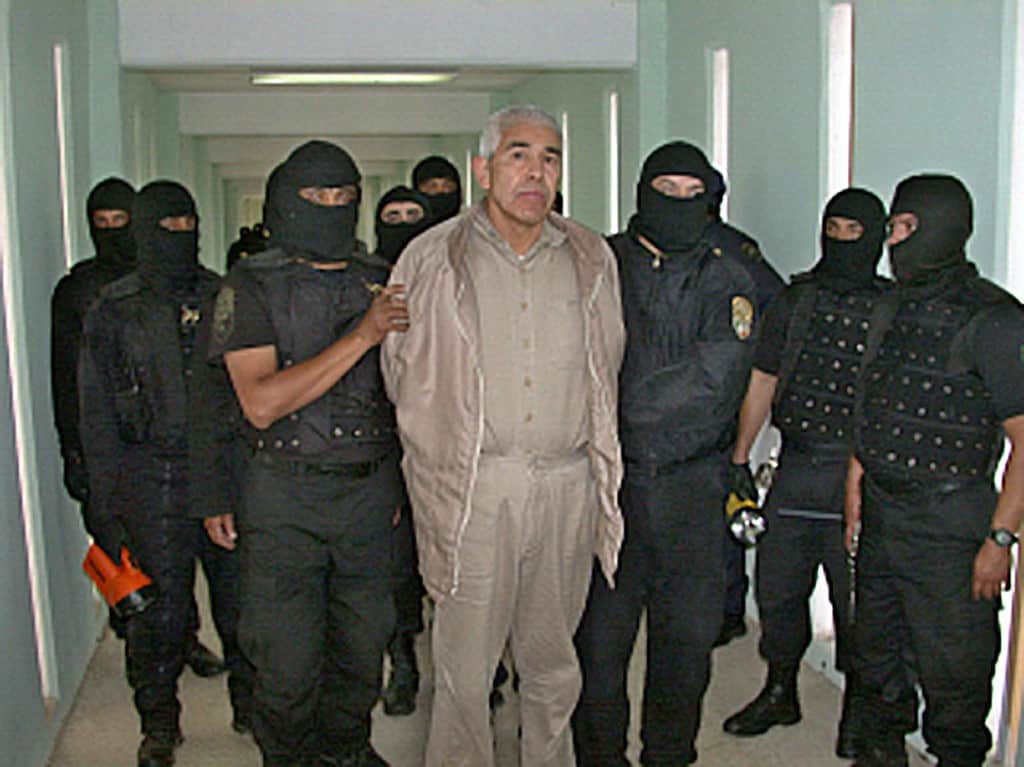Master and lord of marijuana in the 1980s, Rafael Caro Quintero is one of Mexico’s historic drug lords. Although he paid with jail for part of his guilt, a shadow does not stop following him: the murder of U.S. agent ‘Kiki’ Camarena.
69 years old and arrested on Friday by the Mexican military in the state of Sinaloa (northwest), Caro Quintero was known for his ostentation, with a weakness for jewelry and fine clothes.
He was also known for his business savvy and his ability to move in the underworld.
At the age of 14, he started growing marijuana in his native Badiraguato (Sinaloa), the birthplace of another of Mexico’s biggest drug traffickers, Joaquín “El Chapo” Guzmán, sentenced to life imprisonment in the United States.
A prison in that country could also be the final destination of the so-called “Narco of Narcos”, who is wanted for extradition for the murder of DEA agent Enrique ‘Kiki’ Camarena in 1985.
Like other drug lords, Caro Quintero justified his incursion into crime on the grounds of poverty and lack of opportunities.
“I was a very young person who lived here in the sierra, here it is normal to grow marijuana and poppy (the raw material for heroin). I was an orphan, my father died, I was 14 years old and I had to feed my brothers, that’s how it all started,” he told Proceso magazine in 2016.
His biggest mistake
At the end of the 1970s, Caro Quintero allied with Miguel Ángel Félix Gallardo (“El Jefe de Jefes”) and Ernesto Fonseca Carrillo, in what was known as the Guadalajara Cartel, one of the first organizations dedicated to drug trafficking in Mexico.
The “Narco de Narcos” thus became the largest producer and exporter of marijuana in Mexico, and its fortune was estimated at some 500 million dollars.
The Guadalajara Cartel later expanded its business into cocaine, thanks to the links between Miguel Angel Felix Gallardo and the Colombian capo of the Medellin Cartel, Pablo Escobar.
Although he posed as an honest farmer, Caro Quintero, whose life has been portrayed in so-called “narcoseries” on television, was already in the sights of U.S. officials tracking his shipments and ties to Mexican authorities.
Between 1982 and 1984, Kiki Camarena, a U.S. agent of Mexican origin, infiltrated the cartel, resulting in the seizure and destruction of a 2,500-acre marijuana plantation of the “Narco de Narcos” at a hacienda known as the Rancho Búfalo, in the northern state of Chihuahua.
According to U.S. authorities, in his desire for revenge against the DEA, Caro Quintero ordered the torture and death of Camarena, whose body was found in a ditch in March 1985 along with that of Mexican pilot Alfredo Zavala.
Camarena’s murder struck a blow to U.S.-Mexico relations and radicalized the drug war, all of which triggered the fall of the drug lord and the disintegration of the Guadalajara Cartel.
Personal Affair
Caro Quintero was arrested in April 1985 in Costa Rica and sentenced to 40 years in prison for the double crime, although in August 2013 he was released on a legal technicality.
Following his release, the US government demanded his capture for extradition on charges of kidnapping and murder of a federal agent, and possession and distribution of cocaine and marijuana, among other crimes.
A fugitive since then, the DEA also accuses him of having returned to his old ways and was offering up to 20 million dollars for information to capture him.
This is the highest price placed on the head of a Mexican criminal, surpassing active capos such as Nemesio Oseguera, “El Mencho”, leader of the Jalisco Cartel – New Generation, for whom 10 million dollars is being offered.
The recapture of Caro Quintero “was the result of blood, sweat and tears,” said DEA chief Anne Milgram, stressing that he was a target of the highest value.
“It was a personal situation for us. If any criminal kills an agent of ours then we are going to chase an individual like Caro Quintero around the world until he is caught,” Mike Vigil, the DEA’s former head of international operations, told AFP on Saturday.
But Caro Quintero denies having participated in Camarena’s murder. “I didn’t kidnap him, I didn’t torture him and I didn’t kill him,” he told Proceso in hiding, adding that he only wanted to live in peace.

